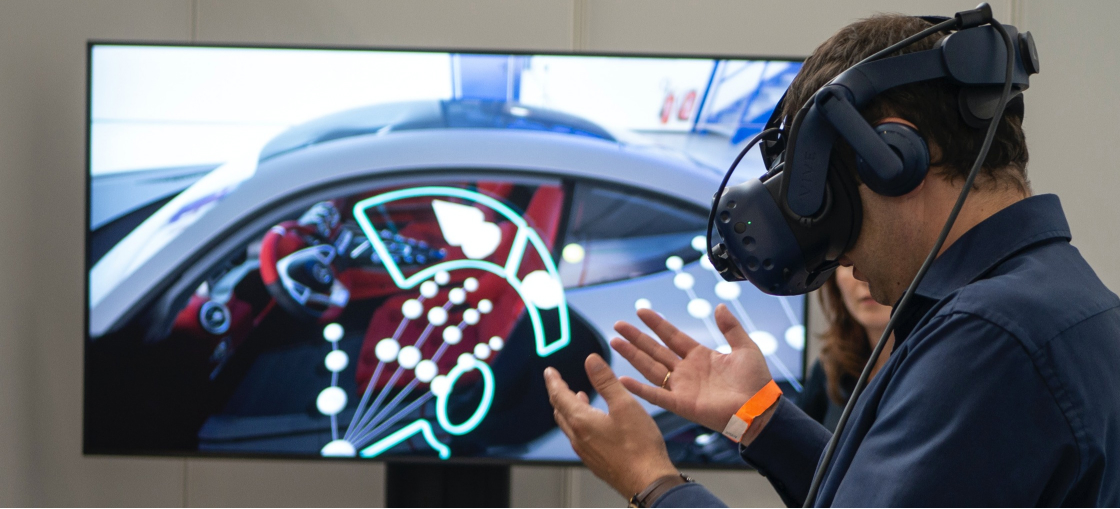December 27, 2022
AR VR: Design Considerations for Immersive Experiences
July 05, 2023
Introduction
In the rapidly evolving landscape of technology, Augmented Reality (AR) and Virtual Reality (VR) have emerged as game-changers, reshaping our interactions with digital content and delivering immersive experiences. With applications spanning gaming, entertainment, education, healthcare, and more, AR and VR technologies are revolutionizing various industries. However, designing interfaces that effectively leverage these immersive experiences requires meticulous consideration. In this article, we delve into the design considerations that empower creators to craft compelling AR and VR interfaces, captivating users and enriching their overall experience.
Understanding the User and the Environment
Successful design of AR and VR interfaces hinges on a deep understanding of the target users and the contexts in which these experiences will be utilized. Factors such as user goals, preferences, and technical proficiency must be taken into account. Furthermore, comprehension of the physical environment where AR or VR applications will be deployed becomes crucial. Lighting conditions, available space, and potential obstacles all influence design choices, ensuring seamless integration into users' surroundings.
User Interface (UI) Design for AR

AR interfaces seamlessly merge digital content with the real world, enabling users to interact with virtual objects within their physical environment. To create effective AR interfaces, designers should focus on the following considerations:
Contextual Placement: Ensuring virtual objects appear natural within the user's environment is paramount. Factors like depth, scale, and perspective must be carefully considered to achieve proper alignment and integration.
Occlusion: AR interfaces must account for real-world objects that may partially or completely obstruct virtual elements. Implementing proper occlusion enhances the realism and immersion of the experience.
User Interactions: Intuitive gestures, movements, or voice commands facilitate seamless interaction with AR content. Keeping interactions simple and intuitive reduces cognitive load and enhances user engagement.
Visual Clarity: Optimize visual elements such as text size, color contrast, and brightness to ensure legibility and visibility across different lighting conditions, guaranteeing a user-friendly AR interface.
User Interface (UI) Design for VR

VR interfaces transport users into entirely virtual environments, providing complete immersion. When designing for VR, specific considerations come into play:
Navigation and Locomotion: VR experiences often necessitate user movement within the virtual space. Intuitive and comfortable navigation options, such as teleportation or smooth locomotion, minimize motion sickness and enhance user comfort.
Visual Hierarchy: Clear visual hierarchies guide users' attention within the virtual environment. Effective use of color, size, and depth cues highlights important elements and provides visual cues for seamless navigation.
Comfortable Interactions: VR interactions should feel natural and ergonomic. Avoiding physically straining or uncomfortable movements prevents fatigue and ensures sustained user engagement.
Feedback and Response: Responsive feedback to user actions reinforces the user's sense of presence within the virtual environment. Utilize visual, auditory, and haptic cues to create a more immersive and engaging experience.
Performance Optimization
AR and VR experiences often demand substantial computational power. Ensuring smooth and immersive interactions necessitates performance optimization, taking into account the following:
Polygon Count and Texture Size: Optimize 3D models by reducing unnecessary polygons and using compressed textures without compromising visual quality. This approach enhances performance and reduces loading times.
Frame Rate: Consistently maintaining a high frame rate prevents motion sickness and ensures a seamless visual experience. Aim for a minimum of 60 frames per second (FPS) to deliver smooth interactions.
Real-Time Rendering: Intuitive gestures, movements, or voice commands facilitate seamless interaction with AR content. Keeping interactions simple and intuitive reduces cognitive load and enhances user engagement.
Conclusion
Augmented Reality (AR) and Virtual Reality (VR) offer tremendous potential for creating immersive experiences across various industries
More from Pixians


February 18, 2023

March 05, 2022